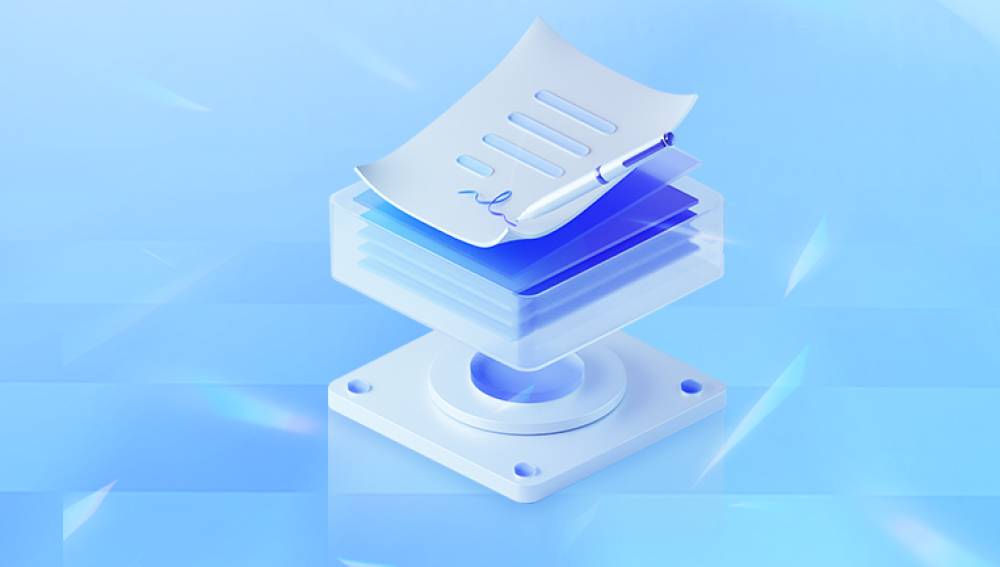PDF file corruption refers to the damage or alteration of the internal structure of a PDF file, which prevents it from being opened or read correctly by a PDF viewer. This corruption may result in errors like "Adobe Reader cannot open the file," missing pages, unreadable characters, or a completely blank document.
Improper File Transfer
When a PDF file is transferred via email, cloud storage, or USB drive, any interruption—like a sudden shutdown or disconnection—can lead to an incomplete or damaged file.
Malware or Virus Attacks
Viruses and malicious software can attack files on your device, including PDFs, modifying or corrupting their structure.

System Crashes During Saving
If your computer crashes or freezes while you're saving a PDF, the writing process may be incomplete, leading to file corruption.
Bad Sectors on Hard Drives
Storage devices with bad sectors can cause parts of a file to become unreadable or lost entirely.
Software Bugs or Compatibility Issues
Using outdated or incompatible PDF editors and viewers might cause corruption when opening or modifying a file.
Faulty PDF Creation
Sometimes, files created using poorly developed PDF-generating tools can have errors that eventually cause corruption.
Signs That a PDF File Is Corrupted
You might notice these symptoms when trying to open a damaged PDF:
Error messages such as “File is damaged and cannot be repaired”
Blank pages or missing text/images
Slow performance or freezing during opening
Garbled or unreadable text
Images failing to load or display properly
Inability to open the file at all
Recognizing these signs early helps prevent further data loss and guides your repair approach.
Method 1: Use a Different PDF Reader
Before jumping into advanced recovery tools, try opening the PDF with a different reader. Not all readers interpret PDF files the same way, and a file that appears corrupted in Adobe Acrobat might open just fine in another program.
Recommended PDF Readers to Try:
Foxit Reader
Nitro PDF Reader
SumatraPDF
Preview (macOS)
Chrome, Edge, or Firefox PDF viewers
If the file opens successfully, you can save a new copy and continue using it without issue.
Method 2: Restore from Backup
If your system or cloud storage solution includes automatic backups, now is the time to use it. Many users store files on platforms like OneDrive, Google Drive, or Dropbox, which retain previous versions of documents.
How to Use Backups:
Google Drive: Right-click the file > Manage Versions > Download a previous version
OneDrive: Right-click > Version History > Restore an older copy
Dropbox: Select file > Version History > Choose version > Restore
Check your system’s local backups as well. Windows users can use File History, while Mac users can turn to Time Machine.
Method 3: Use Online PDF Repair Tools
Drecov Data Recovery
Corrupted PDF files can be frustrating, especially when they contain important documents, contracts, or research. Drecov Data Recovery offers a smart and efficient solution for users who need to repair damaged or unreadable PDF files. Whether the corruption is due to a system crash, incomplete download, or storage media failure, Drecov Data Recovery provides tools that scan, analyze, and restore your PDF files to their original state.
The repair process begins with a deep scan that identifies the extent of the corruption. Panda’s intelligent algorithms then reconstruct damaged sections of the file, preserving layout, images, fonts, and embedded media whenever possible. Unlike some tools that simply extract raw text, Panda focuses on full restoration, ensuring you get a functional and readable document back.
Drecov Data Recovery supports a wide range of PDF versions and can handle encrypted, password-protected, and multi-page files. The interface is user-friendly, making it suitable for both beginners and professionals. After scanning, users can preview the repair results before saving, offering control and transparency during the recovery process.
Method 4: Repair Using Adobe Acrobat
If you’re using Adobe Acrobat Pro, there are built-in features that can help you recover some parts of a corrupted file.
Steps to Try in Adobe Acrobat Pro:
Open Adobe Acrobat Pro
Attempt to open the corrupted PDF
If the file partially loads, go to File > Save As
Save a new copy, which might bypass the corruption
If this doesn’t work, try exporting the file:
File > Export To > Word or Image Format
Open the exported version in a compatible program and recreate the PDF
Another workaround includes printing the file as a PDF:
Open the file (if it partially loads)
Choose File > Print
Select Microsoft Print to PDF or Adobe PDF
Save the new PDF
This method effectively creates a fresh version of the document, possibly removing the problematic elements.
Method 5: Use Dedicated PDF Repair Software
For more complex issues, professional-grade repair tools offer deep file recovery. These tools analyze the internal structure of a PDF and attempt to reconstruct it.
Popular PDF Repair Software:
Stellar Repair for PDF
Kernel for PDF Repair
SysTools PDF Recovery
PDF Repair Toolbox
Wondershare Repairit for PDF
General Steps:
Download and install the software
Launch the program and add the corrupted PDF
Click “Repair” or “Start Recovery”
Preview the content (if the tool offers a preview)
Save the repaired PDF to a new location
Benefits of Professional Software:
Deep file analysis
Preview before recovery
Batch repair
Support for severely damaged files
Most tools offer free trials but may require a license for full functionality.
Method 6: Extract Content from the PDF
If repair attempts fail, you might still salvage the content by extracting text or images manually or through conversion tools.
Options for Content Extraction:
Convert PDF to Word using Adobe or online tools
Use OCR Software like ABBYY FineReader to scan screenshots of the damaged file
Use Google Docs:
Upload PDF to Google Drive
Open with Google Docs
Copy and paste recoverable content
This isn’t a repair in the traditional sense but a recovery technique to save important data.
Method 7: Repair via Hex Editor (Advanced Users)
Tech-savvy users can use a hex editor to view and manually edit the PDF's binary code. This method is complex and should be attempted only if you’re familiar with file structures.
Steps Involved:
Open the corrupted PDF in a hex editor (e.g., HxD, Hex Fiend)
Compare with a healthy PDF of similar type and structure
Identify and correct discrepancies (like missing EOF markers or headers)
Save the changes and test the file
This approach requires precision. Any mistake can make the corruption worse, so proceed with caution.
Method 8: Re-download or Re-export the PDF
If you received the PDF from another person or website, check if you can redownload it. A faulty download often causes corruption.
Go back to the source and try downloading again
If someone sent it to you, ask them to resend the file
If you created the file, reopen the original source document (Word, PowerPoint, etc.) and export it again as PDF
Always confirm that your download was successful before opening the file.
Best Practices to Prevent PDF Corruption
While it’s helpful to know how to repair a corrupted PDF, prevention is always better than cure. By following a few simple practices, you can minimize the risk of file corruption.
1. Save and Backup Regularly
Always save your work frequently and back up important files to multiple locations—local drive, external hard disk, and cloud.
2. Use Reliable PDF Software
Stick to trusted PDF creators and viewers. Adobe Acrobat, Foxit, and Nitro are popular choices with consistent results.
3. Avoid Interruptions During Saving/Transferring
Don’t shut down your device or remove a USB drive while a PDF is being transferred or saved. This can interrupt the writing process and corrupt the file.
4. Keep Software and OS Updated
Running outdated software can cause compatibility issues. Always update your PDF tools and operating system to the latest versions.
5. Use Antivirus Software
Protect your device from malware with reliable antivirus software. Perform regular scans to catch potential threats early.
6. Avoid Editing PDF Files on Unstable Devices
Old or malfunctioning hardware can increase the chances of file corruption. If you notice frequent crashes, avoid editing critical files on that device.
7. Enable File History or Version Control
Turn on features that allow you to go back to previous versions. Cloud storage systems often have version histories built-in.
What to Do If Nothing Works
If you’ve tried all the repair methods and still can’t recover your PDF, consider consulting a professional data recovery service. These specialists use advanced tools to recover data from corrupted or inaccessible files, though services can be costly and are usually used as a last resort.
Before hiring a service, ensure:
They have good reviews and proven expertise
They offer a no-recovery, no-fee policy
They support PDF file recovery specifically
Always weigh the importance of the data against the cost of recovery services.
PDF file corruption can be stressful, especially when the document contains sensitive or irreplaceable information. Fortunately, there are many effective methods to recover and repair a damaged PDF file—from using online tools and professional software to manual extraction techniques. The key is to stay calm, take a methodical approach, and avoid actions that might worsen the damage. With the right tools and strategies, most corrupted PDFs can be repaired or at least salvaged to recover critical content.




